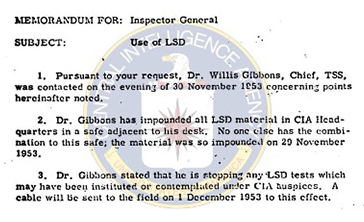
MK-ULTRA continued to operate under the cover of religious cults after its formal shutdown in 1973
In June 1956, Dr. Sidney Gottlieb, who headed the CIA mind-control experiments known as MK-ULTRA, authorized a sub-project involving the testing of LSD on prisoners at the Atlanta Federal Penitentiary.
The sub-project was headed by Dr. Carl Pfeiffer, the chairman of the department of pharmacology at Emory University,[1] who carried out experiments that included the development of an “anti-interrogation drug” that could “produce alterations in the human central nervous system” which was to be “test[ed] on human volunteers.”[2]
In a memorandum for the record, Gottlieb, then chief of the Technical Services Section (TSS) of the CIA’s Chemical Division, wrote that $49,299.12 set aside for the sub-project would “be transferred using the [redacted] as cutout in the usual manner.”
A cornerstone of the study was evaluation of the effects of large doses of LSD-25 in “normal human volunteers.” The CIA believed that LSD-25 had “the ability to counteract the inebriating effects of ethyl alcohol” and could perform other magic functions in interrogation it wanted to further explore.
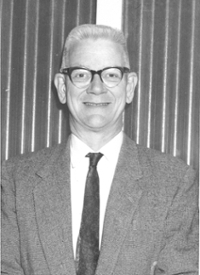
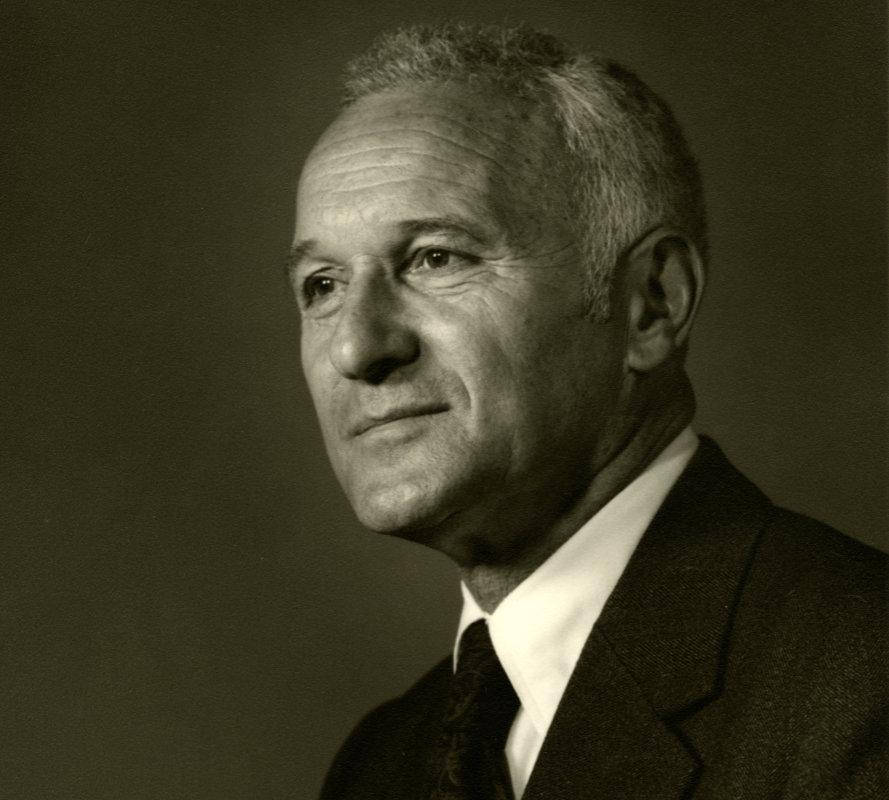
One of the subjects of Pfeiffer’s experiments, the notorious gangster James “Whitey” Bulger, was given LSD every day for nearly 15 months without being told what it was.
In a notebook, he described having “nightly nightmares” and “horrible LSD experiences followed by thoughts of suicide and deep depression [that] would push me over the edge.”
Bulger further described Pfeiffer as a “modern-day Dr. Mengele,” writing that “I was in prison for committing a crime and feel they committed a worse crime on me.”[3]
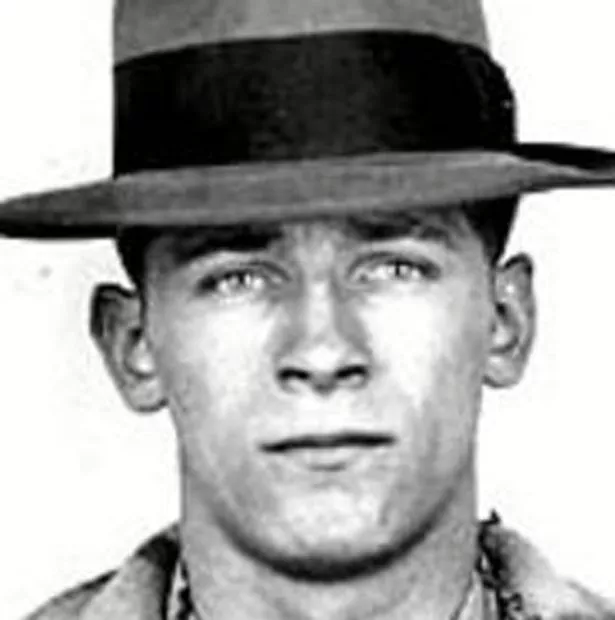
“Provoking Erratic Behavior”
Gottlieb’s memorandum regarding the Pfeiffer experiments with LSD is one of more than 1,000 documents related to MK-ULTRA that have been published by George Washington University’s National Security Archive.
The publication of the documents comes 50 years after a New York Times investigation by Seymour Hersh touched off probes that helped bring MK-ULTRA abuses to light, and 70 years after pharmaceutical giant Eli Lilly and Company first developed a process to streamline the manufacture of LSD, becoming the CIA’s chief supplier of the newly discovered psychoactive chemical central to many of the Agency’s behavior-control efforts.
The newly released documents include a memorandum signed by Gottlieb describing accounting procedures for a CIA safehouse run by Federal Bureau of Narcotics (FBN) agent George White “for conducting experiments involving the covert administration of physiologically active materials to unwitting subjects.”
Under Gottlieb’s direction, White adopted the personae of a bohemian artist, Morgan Hall, to lure victims to his pad. Prostitutes were used by White to slip drugs to the unwitting persons being experimented on.
In an April 1979 telephone interview with the CIA, Gottlieb estimated that approximately 40 drug tests on unwitting subjects were carried out by White in CIA safehouses in an attempt to “explore the full range of the operational use of LSD,” including for “interrogation” and for “provoking erratic behavior.”[4]
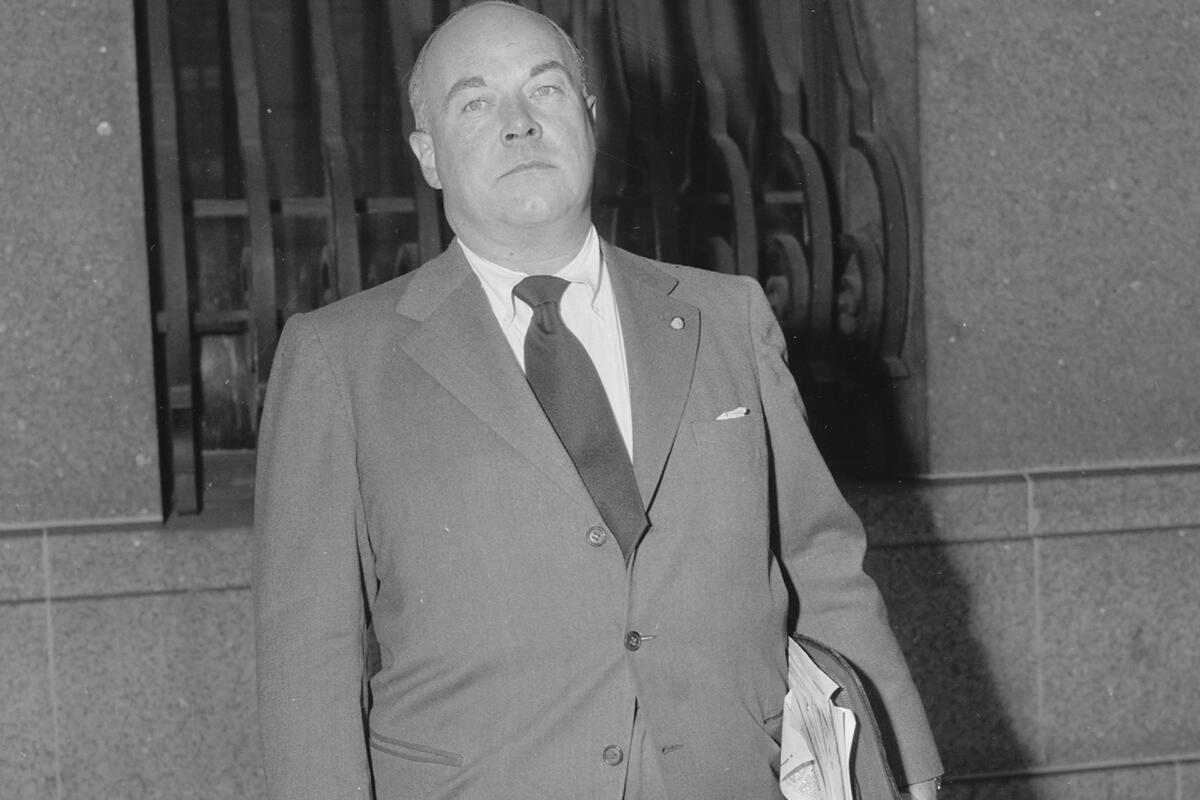
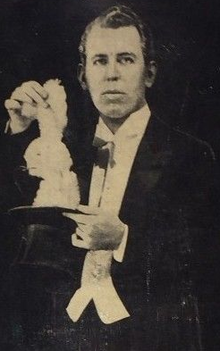
To teach CIA officers how to distract victims’ attention so drugs could be given to them without anyone noticing, Gottlieb contracted a famous magician named John Mulholland who was an expert in “sleight of hand practices and the art of surreptitious delivery or removal.”[5]
A 1954 memo to CIA Director Allen Dulles showed the CIA’s TSS requesting authorization for a project at Georgetown University Hospital that would provide cover for research under the Agency’s “biological and chemical warfare program.”
Using a philanthropic organization as a “cut-out,” the CIA would partially fund “a new research wing” of the hospital (the Gorman Annex) and would use one-sixth of the new annex to conduct “Agency-sponsored research in these sensitive fields.”
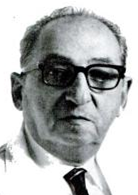
The Agency’s clandestine funding and use of the hospital would be channeled through the Geschickter Fund for Medical Research, named for Dr. Charles Geschickter, a professor of pathology at Georgetown University Hospital who had been secretly working with the CIA since 1951.
The Fund was used “both as a cut-out for dealing with contractors in the fields of covert chemical and biological warfare, and as a prime contractor for certain areas of biological research.” In addition to Geschickter, at least two other board members of the Fund were aware that it was being used to conceal the CIA’s “sensitive research projects.”[6]
Agency sponsorship was “completely deniable since no connection would exist between the University and the Agency.” Three “bio-chemical employees of the Chemical Division of TSS” would be given “excellent professional cover” while “human patients and volunteers for experimental use will be available under excellent clinical conditions” and with hospital supervision.
Early Days and the CIA’s Doctor Death
Officially approved by CIA Director Allen Dulles in 1953, Operation MK-ULTRA was first initiated with the assistance of Nazi scientists recruited under Operation Paperclip. At the time, the Agency was obsessed with countering alleged Chinese brainwashing techniques that had been supposedly applied to American POWs during the Korean War.
Showing the close ties between the CIA and academia, many of the MK-ULTRA sub-projects were carried out through well-regarded universities, like Cornell, Georgetown, Rutgers, Illinois, and the University of Oklahoma.
One of the first academic researchers to participate was the deputy director of Boston Psychopathic Hospital,[7] Dr. Robert Hyde, who in 1949 was the first American to “trip” on LSD after the hospital acquired samples of the drug from Sandoz Laboratories in Switzerland.
In 1952, the CIA began to fund the hospital’s LSD research, under which Hyde used himself, his colleagues, student volunteers, and hospital patients as subjects.
Hyde came to work directly under Gottlieb who was convinced that LSD had powers yet to be understood.[8]
Born in the Bronx to Jewish immigrant parents, Dr. Sidney Gottlieb came from an elite academic background, having obtained his Ph.D. in 1943 from Cal Tech University in biochemistry.
A master manipulator who overcame a handicap (he was born with deformed feet), Gottlieb was recruited into MK-ULTRA by his mentor, Dr. Ira Baldwin, a professor of biochemistry at the University of Wisconsin who was appointed head of the U.S. Army’s biological warfare program during World War II and helped establish the secret army biological warfare facility at Fort Detrick, Maryland, where Gottlieb worked.[9]
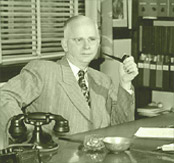
A 1958 CIA fitness report characterized Gottlieb as being “very mature” and “intelligent” whose “only apparent weakness” was “a tendency to let his enthusiasm carry him into more precipitous action than the operational situation will bear.”
At Fort Detrick, Gottlieb was involved in projects that involved the production of industrial quantities of anthrax spores, breeding mosquitos infected with yellow fever, and development of a pigeon bomb, a bird whose feathers were impregnated with toxic spores.[10]
Gottlieb’s top lieutenant at Ft. Detrick, Dr. Frank Olson, was murdered by the CIA after he threatened to become an MK-ULTRA whistleblower.[11]
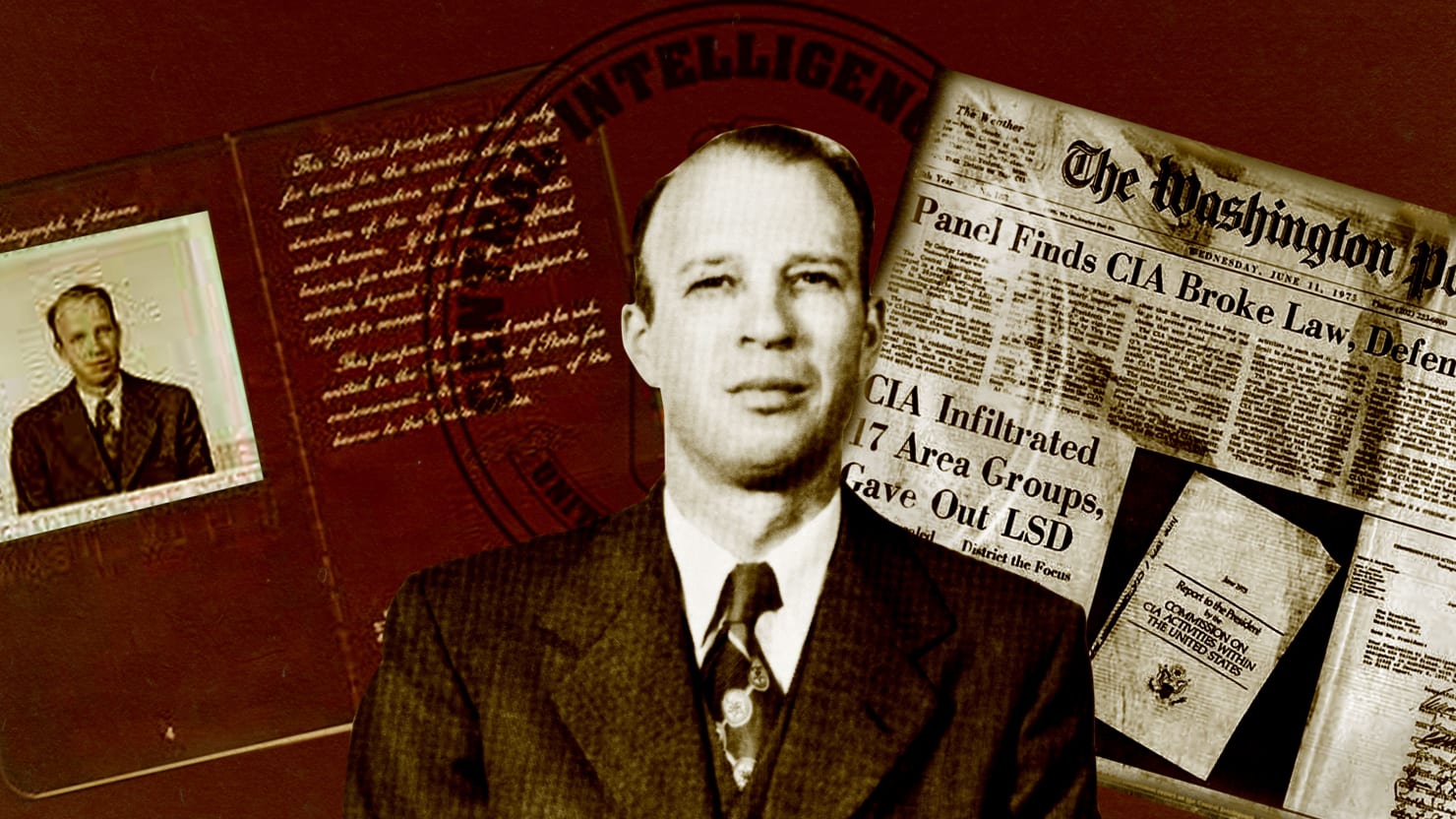
When Gottlieb died, The New York Times heralded him as a “kind of genius striving to explore the frontiers of the human mind for his country.”
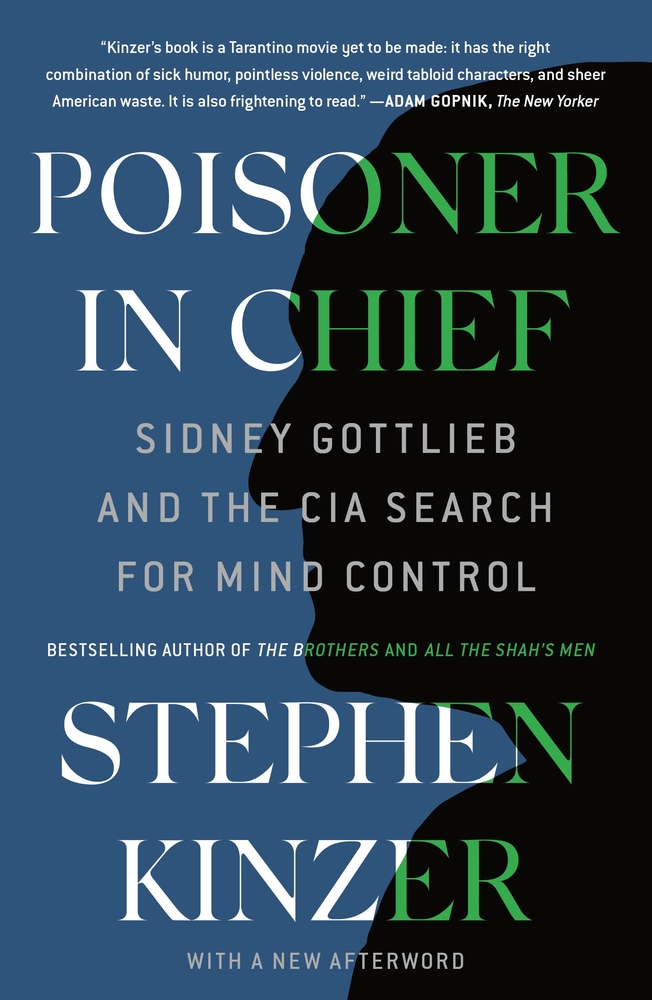
Stephen Kinzer’s 2019 book, Poisoner in Chief emphasized, however, that Gottlieb directed CIA-funded medical experiments and special interrogation projects “in which hundreds of people were tormented and many minds were permanently shattered.”[12]
As the title of the book indicates, Gottlieb was the CIA’s chief poison maker, sending out “an empire of scientists” to “prowl the backwaters of the world for natural poisons” while developing concoctions to kill American government enemies, including poisonous toothpaste and mushrooms and a poison-laced diving suit that was prepared for Fidel Castro.[13]
Gottlieb’s lawyer, Stephen Lenzner, wrote: “I was in contact with Dr. Death himself.”[14]
This latter nickname was reinforced by Gottlieb’s involvement in overseas interrogations where suspected Soviet, Chinese, North Korean or North Vietnamese spies were injected by him and other CIA doctors with copious amounts of drugs and then executed, with their bodies burned.[15]
In a 1983 deposition by attorneys representing Velma “Val” Orlikow, a former patient of the Allen Memorial Institute at McGill University in Montreal where CIA-funded staff under the direction of Dr. Donald Ewen Cameron performed horrific experiments on psychiatric patients during the 1950s and 1960s, Gottlieb admitted to personally conducting interrogations and to talking with his colleagues about identifying techniques for producing retrograde amnesia. He also disclosed that the CIA used psychosurgery research projects designed to alter people’s cognitive state.[16]
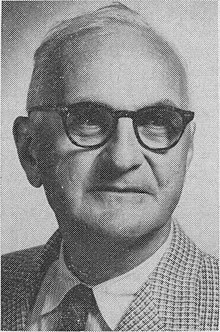
Gottlieb went on to explain in the deposition the role played by the Society for the Investigation of Human Ecology, which he says “was to act in a security sense as a funding mechanism so that the involvement of CIA’s organizational entity would not be apparent in projects that we were funding.” The Geschickter Fund operated much the same way, according to Gottlieb: “It was made as a mechanism to funnel funds for research activities where CIA didn’t want to acknowledge its specific identity as the grantor.”
During the deposition, Gottlieb acknowledged visiting Dr. Harris Isbell, Director of Research at the National Institute of Mental Health (NIMH) Addiction Research Center at Lexington, Kentucky, at least three or four times and that Isbell offered inmates (who were mostly African-Americans from the margins of society) drugs, including LSD, as part of the CIA’s experiments.
The son of one of Isbell’s victims wrote that “what Harris Isbell did to my father was to assault him with a poison that permanently damaged his brain. The CIA’s ill-conceived covert Cold War scheme to find a mind control drug for use on hostile leaders had caught my father in its hateful web.”[17]
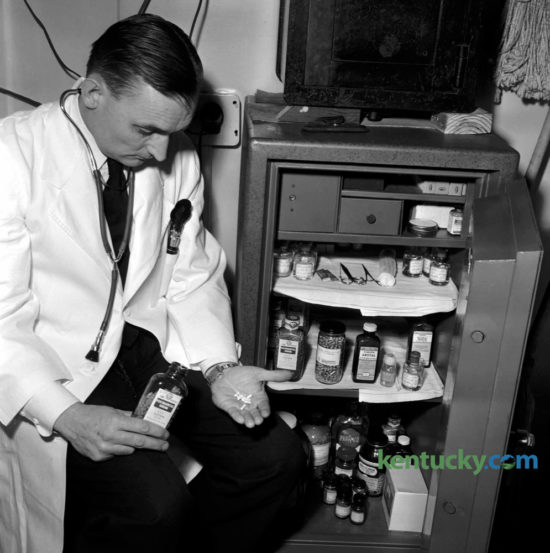
The victims of Dr. Cameron’s experiments at the Allen Memorial Institute suffered similar damages; Val Orlikov’s husband said that his wife was left with her functioning at about 20% of capacity, unable to read, use a fork and knife, or recognize relatives.[18]
In his deposition, Gottlieb admitted that Dr. Cameron had kept some of his subjects on LSD for 77 days because of a research interest in “the quantum effects of LSD, repeated ingestion.”
This kind of practice is what led an internal CIA review to compare Cameron’s experiments to “Nazi medical atrocities.”[19]
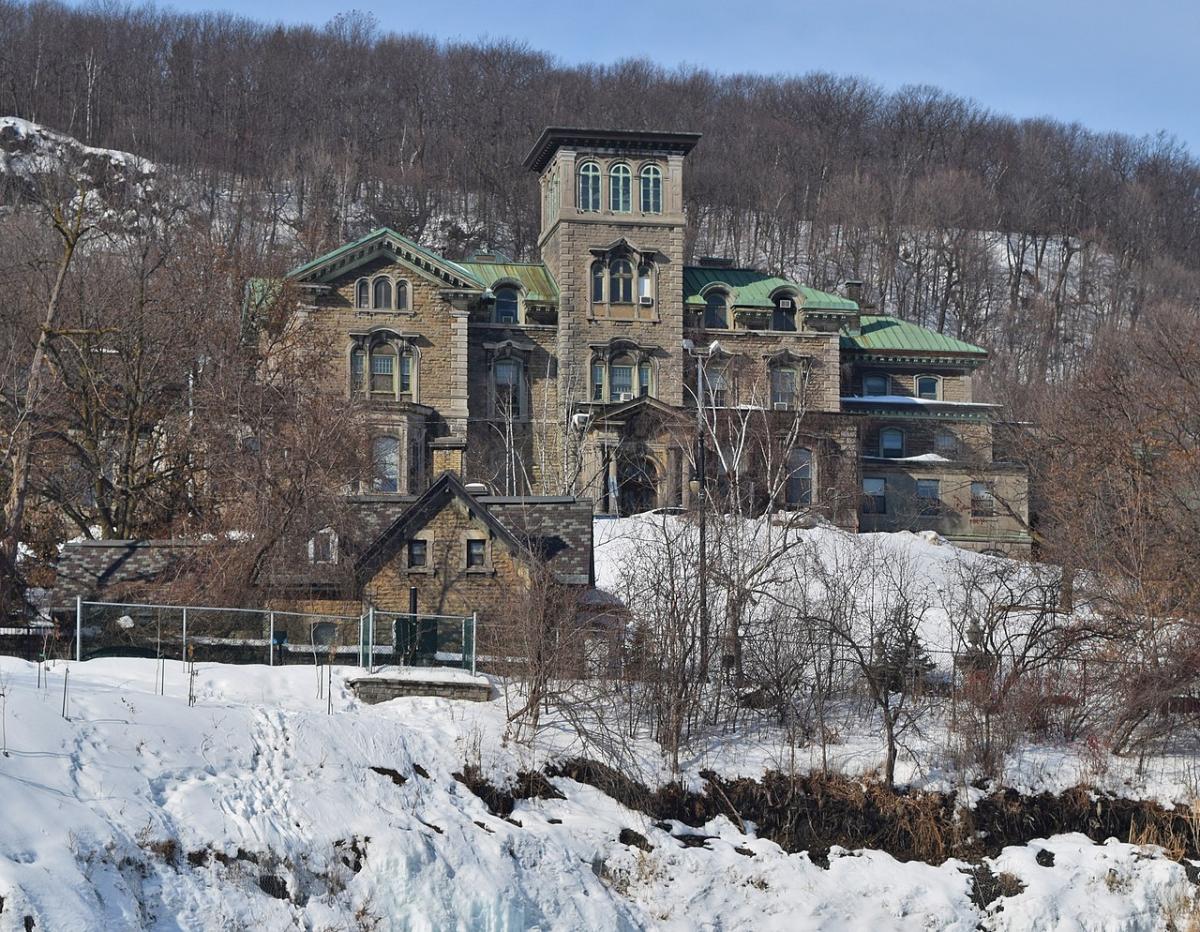
Search for the “Manchurian Candidate”
The National Security Archive documents come primarily from the collection of John Marks, a former State Department official who filed the first Freedom of Information Act requests on the subject and whose 1979 book, The Search for the “Manchurian Candidate”: The CIA and Mind Control—The Secret History of the Behavioral Sciences (New York: W. W. Norton & Company, 1979) remains the single most important source on MK-ULTRA.
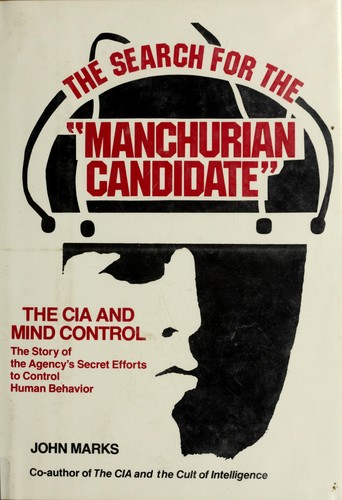
Highlights from the new collection include:
- A 1951 memo that captures a meeting between CIA and foreign intelligence officials about mind-control research and their shared interest in the concept of individual mind control.
- A 1952 entry from the daily calendar of George White.
- A 1952 report on the “successful” use of ARTICHOKE interrogation methods that combined the use of “narcosis” and “hypnosis” to induce regression and later amnesia on “Russian agents suspected of being doubled.”
The first document in the collection is a 1949 overseas report by CIA agent Morse Allen who recommends the establishment of “security validation teams” that would combine the use of drugs, hypnosis and the polygraph to perform a variety of intelligence functions, including the screening of Agency personnel and informants, the interrogation of suspected enemy agents, the processing of any “loyalty cases” that might arise, and the possible use of “operational hypnosis.”
Stephen Kinzer describes Allen in his Gottlieb biography as a “hard-charging security officer” who, given free rein by CIA Director Allen Dulles, “enthusiastically promoted some of the most intense Bluebird and Artichoke projects” including ones that involved testing the effects of radiation, temperature extremes and ultrasonic noise on captives.
Fascinated with the art of hypnosis, Allen pushed for “wider use of polygraphs,” fixated on an “electro-sleep” machine that was supposed to be able to “lull subjects into a trance” and “investigated the possibility that electroshocks could be used to induce amnesia or reduce subjects to a vegetable level.”
In 1952, Allen was part of a three-man team that traveled to Schuster Villa in West Germany to test what one report called “dangerous combination of drugs such as Benzedrine and Pentathol-Natrium on Russian captives, under a research protocol specifying that disposal of the body was not a problem.”[20]
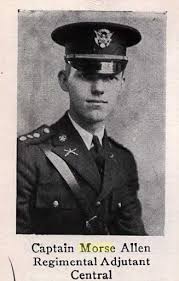

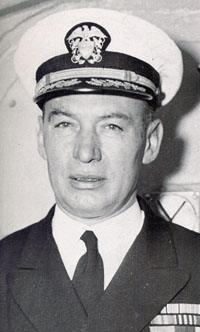
The second National Security Archive document, dated April 5, 1950, offered a plan, approved by then CIA Director Roscoe Hillenkoetter to establish “interrogation teams” that would “utilize the polygraph, drugs, and hypnotism to attain the greatest results in interrogation techniques.”
The plan also proposed creation of an office in Washington that would “serve as a cover for training, experimentation, and indoctrination” of psychiatrists “in the use of drugs and hypnotism.”
When not deployed abroad, the doctors would be used “for defensive training of covert personnel, study, and experimentation in the application of these techniques.”
Reading this document is chilling in light of what we know about the use of hypnosis by CIA doctors to create programmed assassins like Sirhan Sirhan and Mark Chapman who were part of the conspiratorial plots to kill Robert F. Kennedy and Beatles singer John Lennon.[21]
A person linking Sirhan Sirhan and Chapman is Bernard Diamond, a forensic psychiatrist who hypnotized Sirhan and testified at his trial and also visited Chapman in prison. A professor of law and psychiatry at the University of California at Berkeley, Diamond was among the psychiatrists trained in hypnosis through MK-ULTRA.


Two other of these psychiatrists were Dr. Richard Bloom, an expert hypnotist with a background in intelligence and the military who also visited Chapman while he was in prison, and Milton Kline, another expert hypnotist and CIA consultant connected with Chapman, who once said he could “create a patsy in three months” and “an assassin in 6 [months].”[22]

Link to Torture
The National Security Archive emphasizes that the CIA’s behavior-control research programs contributed decisively to the development of interrogation techniques that Americans and their allies used at detention centers during the Cold War and War on Terror where both physical and psychological torture was deployed.
The forms of torture included shackling, sleep deprivation, electroshock, cramped confinement, hooding and sensory deprivation.
MK-ULTRA techniques were specifically cited in the CIA’s 1963 KUBARK interrogation manual that was the basis for notoriously abusive prisoner interrogations in Vietnam, Guantanamo Bay and elsewhere.[23]
“Massive Use of Chemicals” and Other Abuses
The abuses associated with MK-ULTRA are hinted at in some of the documents in the National Security Archive collection.
A 1954 report on Artichoke interrogations, for example, references the “intravenous injection of fluids and vitamins” and “massive use of chemicals” under the cover of medical treatment for a case of influenza. The report concluded that “ARTICHOKE officials took certain (probably calculated) chances in using the massive dosages of chemicals” but that “ultimate results apparently justified the measures taken.”
Another report from May 1955 notes that the CIA’s Technical Services Chemical Division, headed by Sidney Gottlieb, was working to develop:
- Substances that promote illogical thinking;
- Material and physical methods to produce amnesia and shock and confusion over extended periods;
- substances that would “produce physical disablement, including paralysis”;
- substances that alter personality structure; and
- a knockout pill for use in surreptitious druggings.
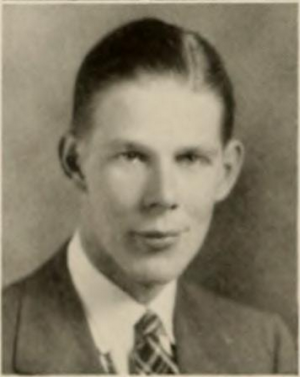
Despite the massive ethical breaches, a 1963 report by John S. Earman, the CIA’s Inspector General, concluded that “MKULTRA materials had not been very useful [overall] in intelligence operations.” He stated further: “As of 1960 no effective knockout pill, truth serum, aphrodisiac, or recruitment pill was known to exist,” although “real progress” was allegedly made in “the use of drugs in support of interrogation.”[24]
MK-ULTRA Afterlife
According to UC Berkeley Professor Richard Ofshe, after the formal termination of the CIA’s Operation MK-ULTRA in 1973, the operation continued to be carried out secretly through religious cults.
One of these cults was the People’s Temple in San Francisco, which recruited members of the Bay Area left by promoting a message of racial integration and social justice.
The head of that cult, Reverend Jim Jones, may have worked as an FBI informant in the 1950s and played a role in at least three CIA projects in the 1960s—in Cuba, Brazil and Guyana, where he established an agricultural commune that looks to have provided a front for MK-ULTRA-type experiments.[25]
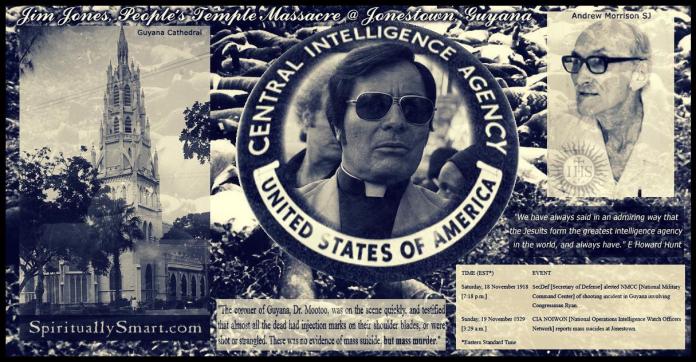
For any misbehavior there, residents at Jonestown were subjected to either drugging or sensory deprivation—a favored CIA technique where someone is deprived a sense of time and kept up at night in stress positions.

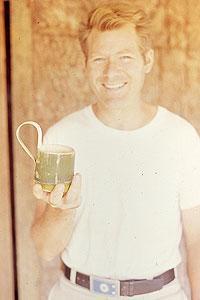
Tom Grubbs, a psychologist with a degree from the University of California and principal of the Jonestown school, allegedly constructed Jonestown’s sensory-deprivation chamber which was placed below ground in a cellar. The effect was that subjects had the feeling of being buried alive. The terror in the technique was further epitomized by the fact that Jones ordered the chambers to be built in the shape of coffins.[26]
The first outsiders to reach the Jonestown medical clinic after the infamous November 1978 massacre, where most of the residents were killed, found enough drugs to supply the average U.S. city for more than a year.
Predominant in the stock were hypnotic drugs, like Pentothal and Nembutal as well as Thorazine, which is used to alter the violent behavior of mental patients and was used in the CIA’s MK-ULTRA experiments.
Researcher John Judge compared Jonestown to a “tightly run concentration camp, complete with medical and psychiatric experimentation.”[27]
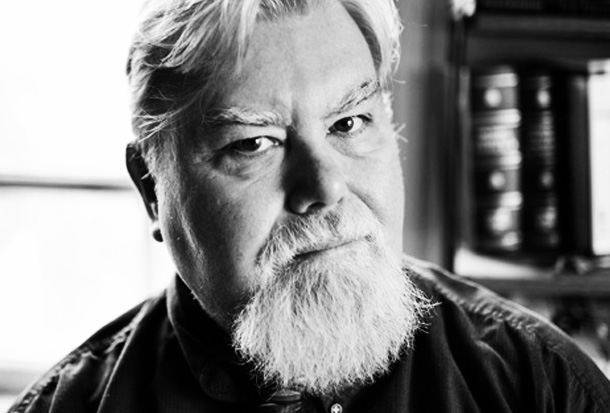
Today, it would be naïve to believe that MK-ULTRA-type programs do not still exist.
The War on Terror and new Cold War have offered new pretexts for CIA-linked scientists to continue to search for magic truth serums and strategies for advancing new coercive interrogation techniques and trying to control human behavior.
One day, these techniques could be widely directed against American citizens if a real social-political rebellion were to break out.
One of the disturbing features of the original MK-ULTRA was that none of its coordinators faced any real public censure or punishment for their involvement in medically unethical and illegal activities.
The impunity has filtered down to their heirs who surely also feel that they can do anything they want so long as it is officially designed to “protect national security.”
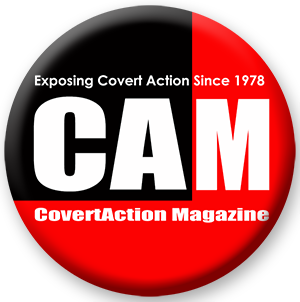
Pfeiffer was a pioneer in the study of bipolar disorder and schizophrenia. Stating that “for every drug that benefits a patient, there is a natural substance that can achieve the same effect,” he believed that biochemical imbalances were responsible for many psychological problems. ↑
The sub-project was titled “The Pharmacological Screening and Evaluation of Chemical Compounds Having Central Nervous System Activities.” ↑
Stephen Kinzer, Poisoner in Chief: Sidney Gottlieb and the CIA Search for Mind Control (New York: Henry Holt, 2019), 98. When Bulger learned from the 1975 Rockefeller Commission Report that Pfeiffer had tormented him not in the name of science but in the interests of the CIA, he told a member of his gang that he planned to find Pfeiffer and kill him. Bulger wrote in his notebook: “I sleep with the lights on 24 hours a day because I have psychological problems (horrible nightmares) due to my being on a medical project called MK-ULTRA. Until 1979, I thought I was insane.” ↑
White had previously served in the Office of Strategic Services (OSS). Gottlieb, his deputy Robert Lashbrook, and CIA psychologist John Gittinger are among the CIA officials who frequently visited White’s safehouses. ↑
Kinzer, Poisoner in Chief, 90, 91. A manual that Mulholland wrote for the CIA, called The Official C.I.A. Manual of Trickery and Deception, which surfaced in 2007, taught that the key to magic tricks is not to move the hand quickly, but to distract attention so the hand can do its work. Once a “performer” understood the principle, he or she could learn to administer poison without detection. Mulholland’s manual explains the use of “misdirection,” including ways an agent can flick a pill into a victim’s drink while distracting him by lighting his cigarette. It tells how capsules can be hidden in and then ejected from wallets, notebooks, or paper pads, how venom can be concealed in a ring, how toxic powders can be dispensed from the eraser cavity of a lead pencil, how female agents can hide a poison in brocade beads and “use the handkerchief as a mask for a liquid container,” and how, thanks to advancing aerosol technology, it had become possible “to spray the liquid on a solid such as bread without either the action or the result being noticed.” ↑
According to Kinzer, some of the experiments at the Georgetown University Hospital involved terminally ill patients. ↑
The Boston Psychopathic Hospital is now the Massachusetts Mental Health Center. ↑
Kinzer, Poisoner in Chief, 100. ↑
Kinzer, Poisoner in Chief, 16, 20. ↑
Kinzer, Poisoner in Chief, 20. ↑
Olson also oversaw development of biological warfare at Fort Detrick that was applied in Korea. ↑
Kinzer, Poisoner in Chief, 2. ↑
Kinzer, Poisoner in Chief, 170, 184. ↑
Kinzer, Poisoner in Chief, 2. Gottlieb’s son told one of his high school girlfriends: “You know my dad has killed people. He made toothpaste to kill someone.” Kinzer called Gottlieb “his generation’s most prolific torturer,” writing that “his cheerfulness and community spirit were a façade that covered his day-to-day work overseeing experiments in which human lives were destroyed.” ↑
Kinzer, Poisoner in Chief, 64. Dr. Frank Olson was one of the CIA doctors who had prepared drug concoctions at Fort Detrick that were then tested on Cold War captives. ↑
Orlikow, the wife of a Winnipeg member of parliament with the leftist New Democratic Party (NDP), was turned into a guinea pig, injected with LSD and forced to participate in “psychic driving”—an experiment in which Dr. Cameron made patients listen to his voice on tape for hours on repeat in an attempt to “depattern” their mind. ↑
Kinzer, Poisoner in Chief, 94. Isbell had first conducted “truth serum” experiments for the Office of Naval Research in World War II. In 1962, Attorney General Robert Kennedy presented Isbell with the U.S. Public Health Meritorious Service Award and praised him as an “outstanding investigator.” After leaving the Lexington addiction center, he became professor of medicine and pharmacology at the University of Kentucky. Isbell’s MK-ULTRA contracts included Sub-project 73 to test whether LSD, mescaline or other drugs could make users more susceptible to hypnosis. Henry Wall was a physician and former state senator from Georgia who became addicted to painkillers after a dental procedure, landing him in the Lexington Center. Isbell’s experiments left Wall mentally crippled. For the rest of his life, Wall suffered from delusions, paranoia, panic attacks and suicidal impulses. His son’s book is called From Healing to Hell. ↑
Kinzer, Poisoner in Chief, 254. ↑
Kinzer, Poisoner in Chief, 140. ↑
Kinzer, Poisoner in Chief, 57. Kinzer recounts that Allen found a famous stage hypnotist in New York who told him that he often had sex with otherwise unwilling women after placing them in a “hypnotic trance.” After taking a four-day course from this evidently talented specialist, Allen returned to Washington to test what he had learned. He used secretaries from CIA offices as his subjects, and several times managed to place them in trances and induce them to do things they might not otherwise consider, like flirting with strangers or revealing office secrets. Allen concluded that, “if hypnotic control can be established over any participant in clandestine operations, the operator will apparently have an extraordinary degree of influence, a control in order of magnitude beyond anything we have considered feasible.” ↑
On Chapman and the Lennon assassinations, see David Whelan, Mind Games: The Assassination of John Lennon (Ipswich, UK: Orwell Books, 2023). ↑
Dana Kennedy, “Second gunman–-not Mark David Chapman—may have shot John Lennon, author claims,” New York Post, April 22, 2023; Whelan, Mind Games, 281, 282. Information on Diamond can be found at https://jaapl.org/content/jaapl/20/2/113.full.pdf. Prior to the Lennon assassination, Chapman was admitted for psychiatric care to Castle Memorial Hospital in Hawaii, which was run by Seventh Day Adventists who were discovered to have provided human guinea pigs for the U.S. military. Dr. Barnett Salzman, an ex-U.S. Navy Lt. Commander in the Vietnam War who worked at Castle Memorial Hospital when Chapman was there, gave a sworn affidavit to a mental health watchdog group stating that Castle Memorial Hospital was engaged in a “behavior modification program,” headed by Dr. Ram Gursahani. Dr. Salzman said the program engaged in “brainwashing” using mind-altering drugs to enforce compliance similar to brainwashing techniques used in prisoner-of-war camps. The drugs that were used included Thorazine and others associated with Operation MK-ULTRA. ↑
See Alfred W. McCoy, A Question of Torture: CIA Interrogation from the Cold War to the War on Terror (New York: Metropolitan Books, 2005); Kinzer, Poisoner in Chief, 278. ↑
The report acknowledged the ethical breaches, noting that “research in the manipulation of human behavior is considered by many authorities in medicine and related fields to be professionally unethical.” It goes on to note that “some MK-ULTRA activities raise questions of legality implicit in the original charter” and that “a final phase of the testing of MK-ULTRA products places the rights and interests of U.S. citizens in jeopardy.” The report further specified that “public disclosure of some aspects of MKULTRA activity could induce serious adverse reaction in U.S. public opinion, as well as stimulate offensive and defensive action in this field on the part of foreign intelligence services.” ↑
During the 1960s and 1970s, Jones received treatment at the Langley Porter Neuropsychiatric Institute in San Francisco. The nation’s leading center for brain research, Langley Porter was known for experiments it conducted on behalf of the Defense Department’s Advanced Research Projects Agency (ARPA). While much of that research is classified, the Institute experimented with electromagnetic effects and behavioral modification techniques involving a wide variety of stimuli—including hypnosis. In Brazil, Jones had studied the magical rites of Macumba and Umbanda and the works of David Miranda, who conducted a study of extra-sensory perception that was also of interest to the CIA in connection with the MK-ULTRA program. So, also, were the “mass conversion” techniques at which Jones’s Pentecostal training had made him an expert. From the beginning of his career, Jones had surrounded himself with a variety of animals including dogs and monkeys—which were mascots for his preliminary experiments in behavior modification. These helped him to develop his tremendous power to manipulate people—which the CIA took interest in. When Jones moved his People’s Temple to Ukiah, California, the group immediately infiltrated the Mendocino State (psychiatric) Hospital which would provide test persons for his preliminary experiments (many patients were actually leased into the Temple’s care) and a training ground for many medical technicians he needed for the ultimate experiment. ↑
Jonestown provided the ideal isolation for medical experiments. The camp medical staff under Dr. Lawrence Schacht, who was known to perform painful suturing without anesthetics, administered drugs and kept daily medical records, which mysteriously all disappeared after the November 1978 massacre. ↑
See Jeremy Kuzmarov, “Was the CIA Behind the Jonestown Massacre?” CovertAction Magazine, October 7, 2022. ↑
CovertAction Magazine is made possible by subscriptions, orders and donations from readers like you.
Blow the Whistle on U.S. Imperialism
Click the whistle and donate
When you donate to CovertAction Magazine, you are supporting investigative journalism. Your contributions go directly to supporting the development, production, editing, and dissemination of the Magazine.
CovertAction Magazine does not receive corporate or government sponsorship. Yet, we hold a steadfast commitment to providing compensation for writers, editorial and technical support. Your support helps facilitate this compensation as well as increase the caliber of this work.
Please make a donation by clicking on the donate logo above and enter the amount and your credit or debit card information.
CovertAction Institute, Inc. (CAI) is a 501(c)(3) non-profit organization and your gift is tax-deductible for federal income purposes. CAI’s tax-exempt ID number is 87-2461683.
We sincerely thank you for your support.
Disclaimer: The contents of this article are the sole responsibility of the author(s). CovertAction Institute, Inc. (CAI), including its Board of Directors (BD), Editorial Board (EB), Advisory Board (AB), staff, volunteers and its projects (including CovertAction Magazine) are not responsible for any inaccurate or incorrect statement in this article. This article also does not necessarily represent the views the BD, the EB, the AB, staff, volunteers, or any members of its projects.
Differing viewpoints: CAM publishes articles with differing viewpoints in an effort to nurture vibrant debate and thoughtful critical analysis. Feel free to comment on the articles in the comment section and/or send your letters to the Editors, which we will publish in the Letters column.
Copyrighted Material: This web site may contain copyrighted material the use of which has not always been specifically authorized by the copyright owner. As a not-for-profit charitable organization incorporated in the State of New York, we are making such material available in an effort to advance the understanding of humanity’s problems and hopefully to help find solutions for those problems. We believe this constitutes a ‘fair use’ of any such copyrighted material as provided for in section 107 of the US Copyright Law. You can read more about ‘fair use’ and US Copyright Law at the Legal Information Institute of Cornell Law School.
Republishing: CovertAction Magazine (CAM) grants permission to cross-post CAM articles on not-for-profit community internet sites as long as the source is acknowledged together with a hyperlink to the original CovertAction Magazine article. Also, kindly let us know at info@CovertActionMagazine.com. For publication of CAM articles in print or other forms including commercial internet sites, contact: info@CovertActionMagazine.com.
By using this site, you agree to these terms above.
About the Author

Jeremy Kuzmarov holds a Ph.D. in American history from Brandeis University and has taught at numerous colleges across the United States. He is regularly sought out as an expert on U.S. history and politics for radio and TV programs and co-hosts a radio show on New York Public Radio and on Progressive Radio News Network called “Uncontrolled Opposition.”
He is Managing Editor of CovertAction Magazine and is the author of six books on U.S. foreign policy, including Obama’s Unending Wars (Clarity Press, 2019), The Russians Are Coming, Again, with John Marciano (Monthly Review Press, 2018), Warmonger. How Clinton’s Malign Foreign Policy Launched the U.S. Trajectory From Bush II to Biden (Clarity Press, 2023); and with Dan Kovalik, Syria: Anatomy of Regime Change (Baraka Books, 2025).
Besides these books, Kuzmarov has published hundreds of articles and contributed to numerous edited volumes, including one in the prestigious Oxford History of Counterinsurgency .
He can be reached at jkuzmarov2@gmail.com and found on substack here.
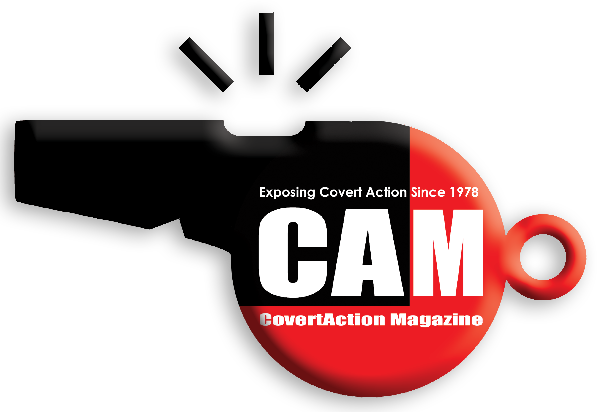

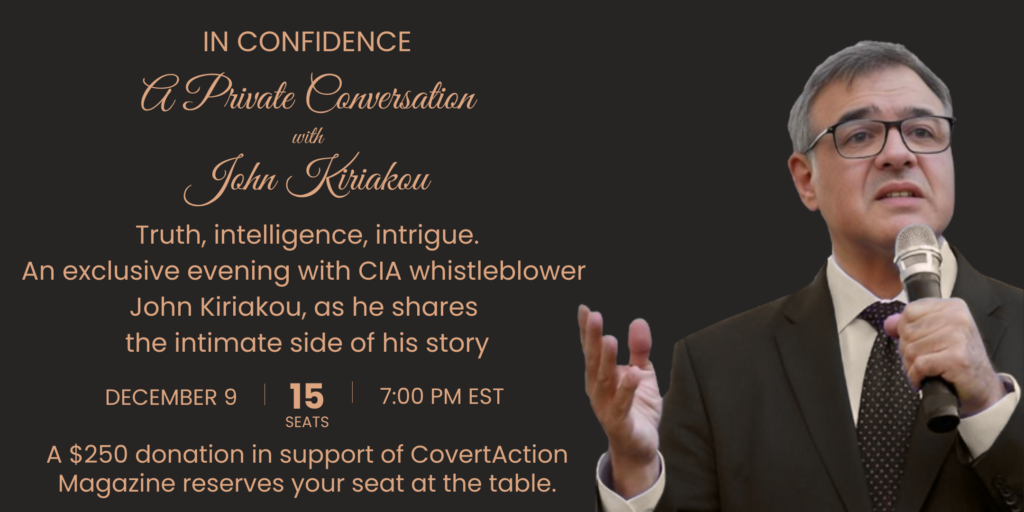
The CIA was definitely behind the assassination of John Lennon.
I read an internet article that implied this but I was rather dismissive as he was not politically vocal at the time. But that is the clever part: Because he was not vocal at the time, people would not suspect the CIA. But surveillance of him continued and so it would have been known that he was planning to get vocal again.
Lennon was about to become a US citizen and so deportation would no longer be even a possibility.
David Whelan’s book is the best one on this subject. It examines the CIA role in greater detail than Fenton Bresler’s 1989 book.
And, another important difference is that it views Mark Chapman as a CIA-hypnotised decoy assassin rather than a CIA-hypnotised actual assassin. The shooting actually took place in The Dakota Building and all talk of a second gunman quickly disappeared.
It appears that these methods are now in use at the Church of Scientology: https://unlimitedhangout.com/2025/04/investigative-series/scientology-the-cia-and-mk-ultra/
Media Bias Fact Check does not rate Unlimited Hangout as a trustworthy web site. Here is their assessment:
Overall, we rate Unlimited Hangout a right-leaning conspiracy and pseudoscience website based on promoting unproven speculation and false claims
Detailed Report
Bias Rating: RIGHT CONSPIRACY-PSEUDOSCIENCE
Factual Reporting: MIXED
Country: USA
MBFC’s Country Freedom Rating: MOSTLY FREE
Media Type: Website
Traffic/Popularity: Medium Traffic
MBFC Credibility Rating: LOW CREDIBILITY
One day in 1980, my old friend Dennis Sweeney walked into Stanford Professor Allard Lowenstein’s campus office and shot him dead. Lowenstein had been Dennis’ mentor and influenced him in his anti-war and civil rights activities. Of course we were all shocked because Dennis had been a sweet guy to know and a careful friend in the Draft Resistance Movement. But he changed. Many of us believe he became another victim of the CIA Ultra program.